Grow Daikon Radish at Home? Absolutely! Imagine pulling crisp, juicy daikon radishes straight from your own backyard. It’s easier than you think, and I’m here to show you how with these simple DIY tricks. For centuries, the daikon radish has been a staple in Asian cuisine, prized not only for its unique flavor but also for its impressive health benefits. From traditional Japanese pickles to Korean kimchi, this versatile root vegetable has a rich cultural history.
But why should you grow daikon radish at home? Well, store-bought radishes often lack the freshness and vibrant taste of homegrown produce. Plus, knowing exactly where your food comes from and how it’s grown gives you peace of mind. I’ve found that growing my own daikon radishes is not only incredibly rewarding but also a fantastic way to add a healthy and delicious ingredient to my meals. These DIY hacks will guide you through the process, ensuring a bountiful harvest even if you’re a beginner gardener. Let’s get started and unlock the secrets to cultivating these amazing radishes in your own backyard!
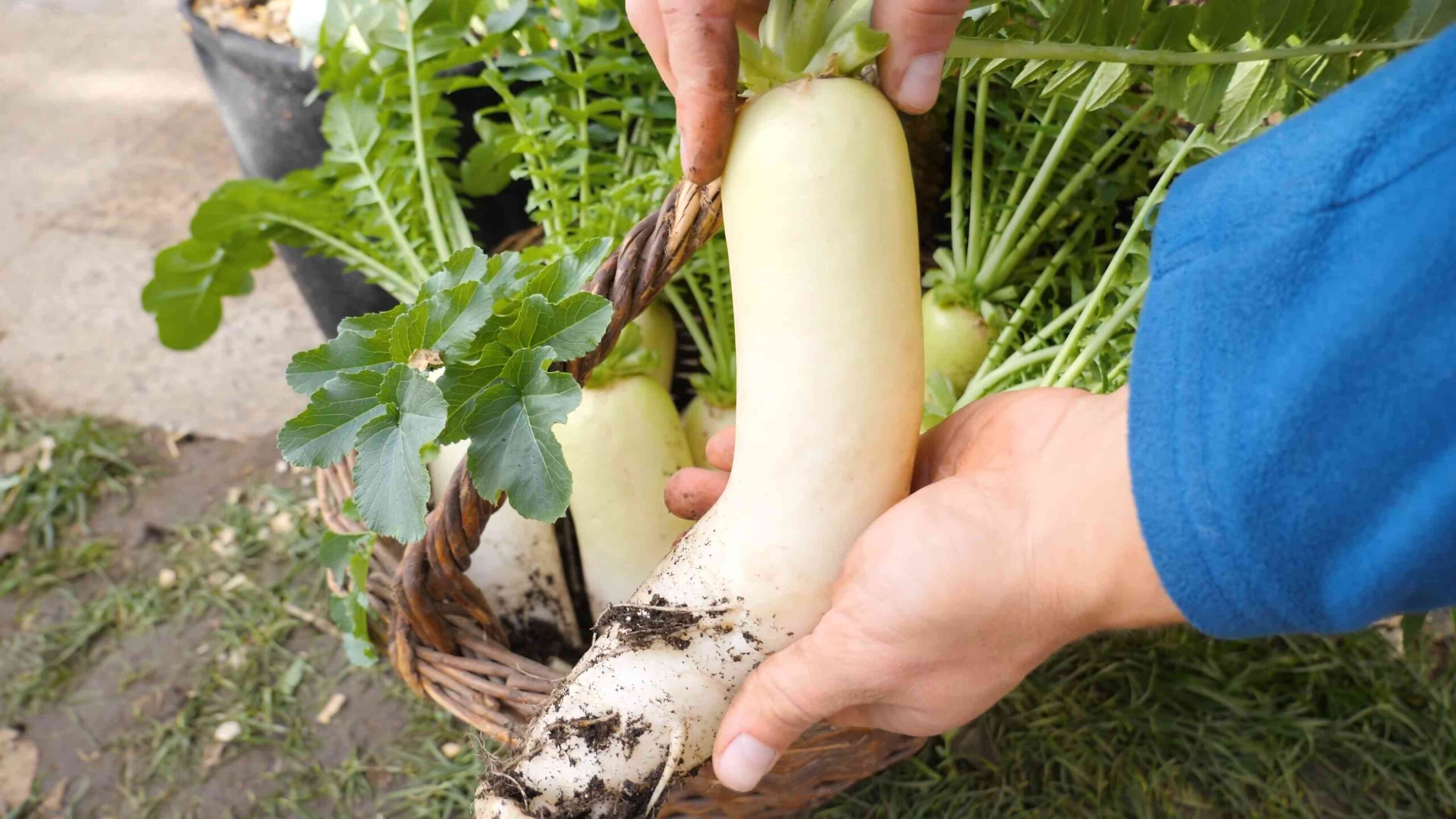
Growing Daikon Radish at Home: A Beginner’s Guide
Hey there, fellow gardening enthusiasts! Ever thought about growing your own daikon radish? It’s surprisingly easy and incredibly rewarding. Daikon radishes are those long, white, crunchy root vegetables you often see in Asian cuisine. They’re packed with nutrients, have a refreshing flavor, and are a fantastic addition to salads, stir-fries, and pickles. Plus, growing them yourself means you get the freshest, most flavorful daikon possible!
This guide will walk you through every step of the process, from choosing the right seeds to harvesting your bounty. Let’s get started!
Choosing the Right Daikon Variety
First things first, you need to pick the right daikon variety for your climate and garden space. There are several types available, each with its own characteristics.
* ‘Minowase’: This is a classic, long, and slender variety, known for its mild flavor and good storage capabilities. It’s a great all-around choice.
* ‘Miyashige’: Similar to ‘Minowase’ but slightly shorter and thicker. It’s also known for its good flavor and texture.
* ‘April Cross’: A faster-maturing variety, perfect if you’re in a hurry to harvest. It’s also more tolerant of warmer weather.
* ‘Watermelon Radish’: While technically a radish, it has a daikon-like shape and a beautiful pink interior. It’s a fun and colorful option.
Consider your local climate and the amount of space you have when making your choice. I personally love ‘Minowase’ because it’s reliable and produces consistently delicious radishes.
Preparing Your Garden Bed
Daikon radishes need loose, well-drained soil to grow properly. Compacted soil will result in stunted, misshapen roots. Here’s how to prepare your garden bed:
* Choose a Sunny Location: Daikon radishes need at least 6 hours of sunlight per day.
* Loosen the Soil: Use a garden fork or tiller to loosen the soil to a depth of at least 12 inches. This is crucial for allowing the roots to grow freely.
* Amend the Soil: Incorporate plenty of compost or well-rotted manure into the soil. This will improve drainage, add nutrients, and create a loose, fertile growing medium.
* Remove Rocks and Debris: Clear the area of any rocks, stones, or other debris that could obstruct root growth.
* Check the pH: Daikon radishes prefer a soil pH between 6.0 and 7.5. You can test your soil pH with a home testing kit or send a sample to your local agricultural extension office. Amend the soil with lime to raise the pH or sulfur to lower it, if necessary.
I usually spend a good amount of time on soil preparation because it really makes a difference in the final yield. Don’t skimp on this step!
Planting Daikon Seeds
Now comes the fun part – planting the seeds!
1. Timing is Key: Daikon radishes are cool-season crops, so the best time to plant them is in late summer or early fall for a fall/winter harvest. In areas with mild winters, you can also plant them in early spring for a spring harvest. Avoid planting during the hottest months of summer, as the heat can cause the roots to become tough and bitter.
2. Direct Sowing: Daikon radishes are best direct-sown, meaning you plant the seeds directly into the garden bed. They don’t transplant well.
3. Spacing: Sow the seeds about ½ inch deep and 2-3 inches apart in rows that are 12-18 inches apart.
4. Watering: Gently water the soil after planting to ensure good seed-to-soil contact. Keep the soil consistently moist until the seeds germinate, which usually takes about 5-7 days.
5. Thinning: Once the seedlings emerge and have a few true leaves, thin them to 6-8 inches apart. This will give the remaining plants enough space to develop large, healthy roots. Don’t be afraid to thin them aggressively – it’s better to have fewer, larger radishes than a crowded bed of small ones.
I like to plant a few extra seeds in each spot just in case some don’t germinate. Then, I thin them out later.
Caring for Your Daikon Radishes
Once your daikon radishes are planted, it’s important to provide them with the care they need to thrive.
* Watering: Daikon radishes need consistent moisture to grow properly. Water deeply and regularly, especially during dry periods. Aim for about 1 inch of water per week.
* Weeding: Keep the garden bed free of weeds, which can compete with the daikon radishes for nutrients and water. Hand-pull weeds carefully to avoid disturbing the roots of the radishes.
* Fertilizing: Daikon radishes are heavy feeders, so they benefit from regular fertilization. Apply a balanced fertilizer (e.g., 10-10-10) according to the package directions. You can also side-dress the plants with compost or well-rotted manure.
* Pest Control: Daikon radishes can be susceptible to certain pests, such as flea beetles and cabbage root maggots. Monitor your plants regularly for signs of infestation. Use organic pest control methods, such as insecticidal soap or neem oil, to control pests. You can also cover the plants with row covers to prevent pests from reaching them.
* Bolting Prevention: Bolting (when the plant prematurely flowers) can occur if the weather gets too hot. To prevent bolting, make sure to plant your daikon radishes at the right time of year and provide them with adequate water. You can also mulch around the plants to help keep the soil cool.
I’ve found that consistent watering and regular weeding are the most important factors in growing healthy daikon radishes.
Harvesting Your Daikon Radishes
The moment you’ve been waiting for – harvesting your daikon radishes!
1. Maturity Time: Daikon radishes typically take 50-70 days to mature, depending on the variety. Check the seed packet for specific maturity times.
2. Size Matters: The size of the radish is a good indicator of maturity. Most daikon varieties are ready to harvest when they are 12-24 inches long and 2-4 inches in diameter.
3. Check the Tops: You can also check the tops of the radishes. If the tops are starting to emerge from the soil, it’s a good sign that the roots are ready to harvest.
4. Loosen the Soil: Before pulling the radishes, loosen the soil around them with a garden fork. This will make it easier to pull them out without breaking them.
5. Pull Carefully: Grasp the tops of the radishes firmly and gently pull them out of the ground. If they are difficult to pull, use the garden fork to loosen the soil further.
6. Clean and Store: Once you’ve harvested your daikon radishes, wash them thoroughly to remove any dirt. Trim off the tops and roots. Store the radishes in the refrigerator in a plastic bag or container. They will keep for several weeks.
I love the feeling of pulling a huge, perfectly formed daikon radish out of the ground. It’s such a satisfying reward for all your hard work!
Dealing with Common Problems
Even with the best care, you might encounter some problems while growing daikon radishes. Here are a few common issues and how to address them:
* Splitting Roots: Splitting roots can be caused by inconsistent watering. Make sure to water your daikon radishes regularly and deeply, especially during dry periods.
* Forked Roots: Forked roots can be caused by compacted soil or rocks in the soil. Prepare your garden bed carefully and remove any rocks or debris.
* Pest Damage: As mentioned earlier, daikon radishes can be susceptible to certain pests. Monitor your plants regularly and use organic pest control methods to control pests.
* Bitter Taste: A bitter taste can be caused by hot weather or stress. Plant your daikon radishes at the right time of year and provide them with adequate water and nutrients.
Don’t get discouraged if you encounter problems. Gardening is all about learning and experimenting.
Enjoying Your Harvest
Now that you’ve harvested your daikon radishes, it’s time to enjoy them! There are countless ways to use daikon radishes in your cooking.
* Salads: Grate or thinly slice daikon radishes and add them to salads for a refreshing crunch.
* Stir-fries: Add diced daikon radishes to stir-fries for a mild, slightly peppery flavor.
* Pickles: Daikon radishes are a popular ingredient in Asian pickles, such as kimchi and
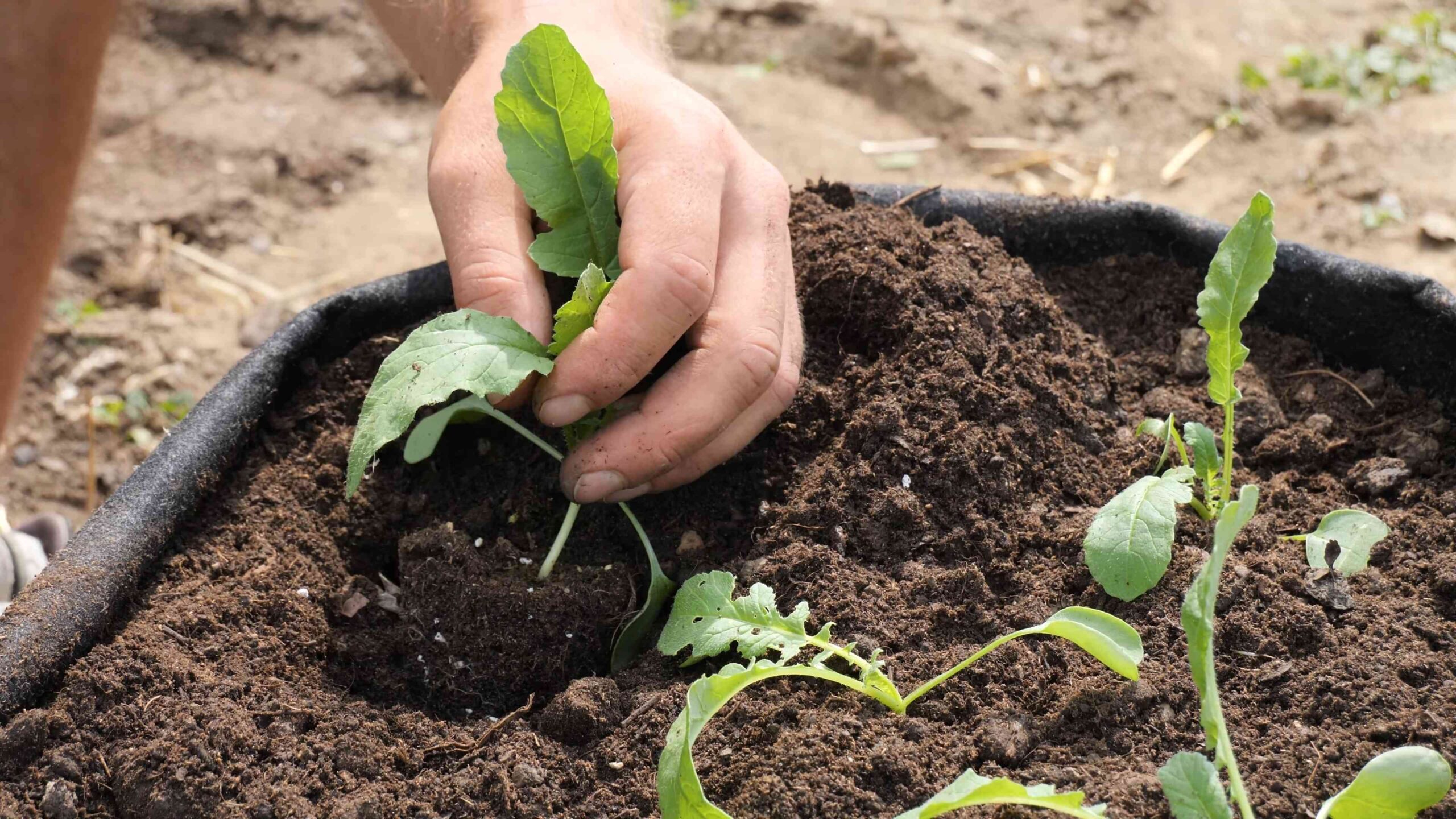
Conclusion
So, there you have it! Growing your own Daikon radish at home is not only surprisingly simple, but it’s also incredibly rewarding. Forget those bland, often woody radishes you find at the grocery store. With just a little effort, you can cultivate crisp, juicy, and flavorful Daikon radishes right in your own backyard or even in containers on your balcony.
Why is this DIY trick a must-try? Because it puts you in control. You control the soil, the watering, and the overall growing environment, resulting in a superior product. Imagine the satisfaction of harvesting a Daikon radish that you nurtured from seed to table. The taste difference alone is worth the effort. Plus, you’ll be reducing your carbon footprint by sourcing your produce locally – from your own garden!
Beyond the basic method outlined, there are plenty of ways to experiment and personalize your Daikon radish growing experience. Consider these variations:
* Succession Planting: Plant seeds every few weeks to ensure a continuous harvest throughout the growing season. This way, you’ll always have fresh Daikon radishes on hand.
* Companion Planting: Daikon radishes are excellent companion plants for carrots, lettuce, and spinach. They help break up the soil and deter pests. Try interplanting them in your vegetable garden for added benefits.
* Container Gardening: If you’re short on space, don’t despair! Daikon radishes thrive in large containers. Just make sure the container is deep enough to accommodate their long roots.
* Different Varieties: Explore the world of Daikon radish varieties! From the classic ‘Minowase’ to the colorful ‘Watermelon’ radish, there’s a Daikon radish out there to suit every taste and preference.
* Soil Amendments: Experiment with different soil amendments to improve drainage and fertility. Compost, well-rotted manure, and bone meal can all contribute to healthier, more productive plants.
Growing your own Daikon radish is more than just a gardening project; it’s an opportunity to connect with nature, learn new skills, and enjoy the fruits (or rather, vegetables) of your labor. It’s a chance to experience the unparalleled flavor of freshly harvested produce and to take pride in your own green thumb.
We wholeheartedly encourage you to give this DIY trick a try. It’s easier than you think, and the rewards are well worth the effort. Don’t be afraid to experiment, adapt the method to your specific growing conditions, and most importantly, have fun!
Once you’ve harvested your first crop of homegrown Daikon radishes, we’d love to hear about your experience. Share your photos, tips, and recipes with us in the comments below. Let’s create a community of Daikon radish enthusiasts and inspire others to embrace the joy of gardening! Let us know what worked for you, what challenges you faced, and any creative ways you’ve found to use your homegrown Daikon radishes. Your insights could be invaluable to other aspiring gardeners. So, grab your seeds, get your hands dirty, and embark on your Daikon radish growing adventure today! You’ll be amazed at what you can achieve.
Frequently Asked Questions (FAQ)
What is the best time of year to plant Daikon radishes?
The best time to plant Daikon radishes depends on your climate. Generally, they are a cool-season crop, meaning they thrive in cooler temperatures. For most regions, the ideal planting times are late summer or early fall for a fall/winter harvest, or early spring for a spring harvest. Avoid planting during the hottest months of summer, as high temperatures can cause the radishes to bolt (go to seed) and become bitter. Check your local climate and planting guides for specific recommendations.
How much sunlight do Daikon radishes need?
Daikon radishes need at least 6 hours of direct sunlight per day to grow properly. Choose a planting location that receives ample sunlight throughout the day. If you’re growing them in containers, you may need to move them around to ensure they get enough sunlight. Insufficient sunlight can result in smaller, less flavorful radishes.
What type of soil is best for growing Daikon radishes?
Daikon radishes prefer loose, well-drained soil that is rich in organic matter. Heavy clay soil can hinder root development and result in misshapen radishes. Amend heavy soil with compost, well-rotted manure, or other organic materials to improve drainage and aeration. A slightly acidic to neutral soil pH (around 6.0 to 7.0) is ideal.
How often should I water my Daikon radishes?
Daikon radishes need consistent moisture to grow properly. Water them regularly, especially during dry periods. Aim to keep the soil consistently moist but not waterlogged. Overwatering can lead to root rot, while underwatering can cause the radishes to become tough and bitter. A good rule of thumb is to water deeply whenever the top inch of soil feels dry to the touch.
How long does it take for Daikon radishes to mature?
Daikon radishes typically mature in 50 to 70 days, depending on the variety and growing conditions. Check the seed packet for specific maturity times. You can harvest them when they reach the desired size, which is usually when the top of the radish is visible above the soil line.
How do I know when my Daikon radishes are ready to harvest?
You can tell when Daikon radishes are ready to harvest by their size and the appearance of the top of the radish. The top of the radish should be visible above the soil line and should be firm to the touch. Gently loosen the soil around the radish and pull it out of the ground.
What are some common pests and diseases that affect Daikon radishes?
Common pests that can affect Daikon radishes include flea beetles, aphids, and root maggots. Diseases include clubroot and fungal infections. To prevent pests and diseases, practice good garden hygiene, such as removing plant debris and rotating crops. Use row covers to protect plants from pests. If necessary, use organic pest control methods or fungicides.
Can I eat the greens of Daikon radishes?
Yes, the greens of Daikon radishes are edible and nutritious. They have a slightly peppery flavor and can be used in salads, stir-fries, or soups. Harvest the greens when they are young and tender.
How do I store Daikon radishes after harvesting?
To store Daikon radishes, remove the greens and wash the radishes thoroughly. Store them in a plastic bag in the refrigerator for up to several weeks. You can also store them in a cool, dark, and humid place, such as a root cellar.
My Daikon radishes are long and thin, not round and plump. What did I do wrong?
Long, thin Daikon radishes are often the result of overcrowding or poor soil. Make sure you thin your seedlings properly to give them enough space to grow. Also, ensure that your soil is loose and well-drained. Amending heavy soil with compost or other organic matter can help improve root development.
Can I grow Daikon radishes in containers?
Yes, you can grow Daikon radishes in containers, but you’ll need to choose a large container that is at least 12 inches deep to accommodate their long roots. Use a well-draining potting mix and water regularly.
What can I do with Daikon radishes?
Daikon radishes can be eaten raw, cooked, or pickled. They are a popular ingredient in Asian cuisine and can be used in salads, stir-fries, soups, and stews. They can also be grated and used as a garnish.


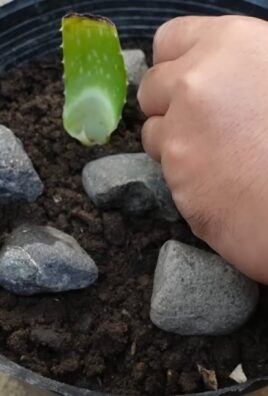
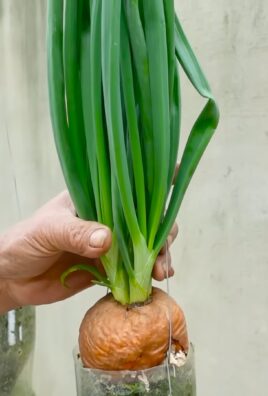
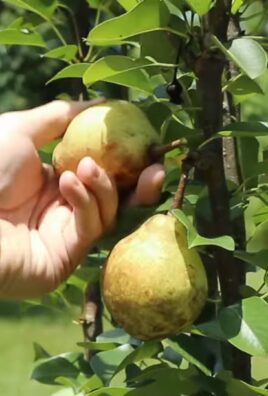
Leave a Comment